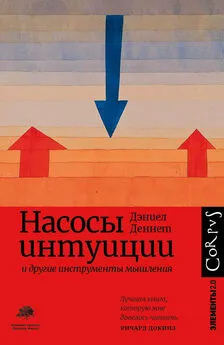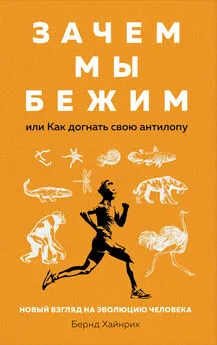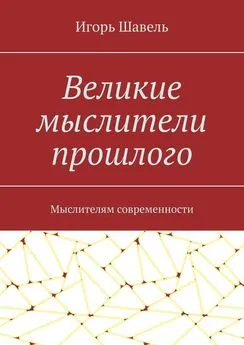Дэниел Клемент Деннет - Разум: от начала до конца. Новый взгляд на эволюцию сознания от ведущего мыслителя современности
- Название:Разум: от начала до конца. Новый взгляд на эволюцию сознания от ведущего мыслителя современности
- Автор:
- Жанр:
- Издательство:Литагент 5 редакция «БОМБОРА» (БЕЗ ПОДПИСКИ)
- Год:2021
- Город:М.
- ISBN:978-5-04-157344-7
- Рейтинг:
- Избранное:Добавить в избранное
-
Отзывы:
-
Ваша оценка:
Дэниел Клемент Деннет - Разум: от начала до конца. Новый взгляд на эволюцию сознания от ведущего мыслителя современности краткое содержание
В своей новой книге «Разум: от начала до конца» выдающийся философ Дэниел К. Деннет, опираясь на открытия современной науки, шаг за шагом исследует возникновение и развитие разума. Мировой бестселлер, получивший мировое признание, будет особенно интересен новому поколению философов и ученых.
Разум: от начала до конца. Новый взгляд на эволюцию сознания от ведущего мыслителя современности - читать онлайн бесплатно ознакомительный отрывок
Интервал:
Закладка:
Pylyshyn, Zenon. 1973. “What the Mind’s Eye Tells the Mind’s Brain: A Critique of Mental Imagery.” Psychological Bulletin 80: 1–24.
–—. 2002. “Mental Imagery: In Search of a Theory.” Behavioral and Brain Sciences 25 (2): 157–182.
Quine, W. V. 1951. “Two Dogmas of Empiricism.” Philosophical Review 60: 20–43.
Rehder, M. F., Michael B. Schreiner, W. Wolfe, Darrell Laham, Thomas K. Landauer, and Walter Kintsch. 1998. “Using Latent Semantic Analysis to Assess Knowledge: Some Technical Considerations.” Discourse Processes 25 (2/3): 337–354.
Rendell L., R. Boyd, D. Cownden, M. Enquist, K. Eriksson, M. W. Feldman, L. Fogarty, S. Ghirlanda, T. Lillicrap, and K. N. Laland. 2010. “Why Copy Others? Insights from the Social Learning Strategies Tournament.” Science 328 (5975): 208–213.
Richard, Mark. Forthcoming. Meanings as Species.
Richerson, P. J., and R. Boyd. 2004. Not by Genes Alone. Chicago: University of Chicago Press.
Ridley, Matt. 2010. The Rational Optimist. New York: Harper Collins.
Ristau, Carolyn A. 1983. “Language, Cognition, and Awareness in Animals?” Annals of the New York Academy of Sciences 406 (1): 170–186.
Rogers, D. S., and P. R. Ehrlich. 2008. “Natural Selection and Cultural Rates of Change.” Proceedings of the National Academy of Sciences of the United States of America 105 (9): 3416–3420.
Rosenberg, Alexander. 2011. The Atheist’s Guide to Reality: Enjoying Life without Illusions. New York: W. W. Norton.
Roy, Deb. 2011. “The Birth of a Word.” TED talk, http://www.ted.com/talks/deb_roy_the_birth_of_a_word0.
Sanford, David H. 1975. “Infinity and Vagueness.” Philosophical Review 84 (4): 520–535.
Scanlon, Thomas. 2014. Being Realistic about Reasons. New York: Oxford University Press.
Schönborn, Christoph. 2005. “Finding Design in Nature.” New York Times, July 7.
Schwitzgebel, Eric. 2007. “No Unchallengeable Epistemic Authority, of Any Sort, Regarding Our Own Conscious Experience – Contra Dennett?” Phenomenology and the Cognitive Sciences 6 (1–2): 1–2.
Seabright, Paul. 2010. The Company of Strangers: A Natural History of Economic Life. Rev. ed. Princeton, N.J.: Princeton University Press.
Searle, John. R. 1980. “Minds, Brains, and Programs.” Behavioral and Brain Sciences 3 (3): 417–457.
–—. 1992. The Rediscovery of the Mind. Cambridge, Mass.: MIT Press.
Selfridge, Oliver G. 1958. “Pandemonium: A Paradigm for Learning in Mechanisation of Thought Processes.” In Proceedings of a Symposium Held at the National Physical Laboratory, 513–526.
Sellars, Wilfrid. 1962. Science, Perception, and Reality. London: Routledge and Paul.
Seung, H. S. 2003. “Learning in Spiking Neural Networks by Reinforcement of Stochastic Synaptic Transmission.” Neuron 40 (6): 1063–73.
Seyfarth, Robert, and Dorothy Cheney. 1990. “The Assessment by Vervet Monkeys of Their Own and Another Species’ Alarm Calls.” Animal Behaviour 40 (4): 754–764.
Seyfarth, Robert, Dorothy Cheney, and Peter Marler. 1980. “Vervet Monkey Alarm Calls: Semantic Communication in a Free-Ranging Primate.” Animal Behaviour 28 (4): 1070–1094.
Shanahan, Murray. 2010. Embodiment and the Inner Life. New York: Oxford University Press.
Shannon, Claude Elwood. 1948. “A Mathematical Theory of Communication.” Bell System Technical Journal 27 (3).
Shannon, Claude Elwood, and Warren Weaver. 1949. The Mathematical Theory of Communication. Urbana: University of Illinois Press.
Shepard, Roger N., and Jacqueline Metzler. 1971. “Mental Rotation of Three Dimensional Objects.” Science 171 (3972): 701–703.
Shepard, Roger N., and Lynn A. Cooper. 1982. Mental Images and Their Transformations. Cambridge, Mass.: MIT Press.
Siegel, Lee. 1991. Net of Magic: Wonders and Deceptions in India. Chicago: University of Chicago Press.
Siewert, Charles. 2007. “In Favor of (Plain) Phenomenology.” Phenomenology and the Cognitive Sciences 6 (1–2): 201–220.
Simmons, K. E. L. 1952. “The Nature of the Predator-Reactions of Breeding Birds.” Behaviour 4: 161–171.
Simon, Herbert A. 1969. The Sciences of the Artificial. Cambridge, Mass.: MIT Press.
Skutch, Alexander F. 1976. Parent Birds and Their Young. Austin: University of Texas Press.
Smith, Brian Cantwell. 1985. “The Limits of Correctness in Computers.” Symposium on Unintentional Nuclear War, Fifth Congress of the International Physicians for the Prevention of Nuclear War, Budapest, Hungary, June 28–July 1.
Smith, S. D., and P. M. Merikle. 1999. “Assessing the Duration of Memory for Information Perceived without Awareness.” Poster presented at the 3rd Annual Meeting of the Association for the Scientific Study of Consciousness, Canada.
Smith, Stevie. 1957. Not Waving but Drowning; Poems. London: A. Deutsch.
Sober, Elliott, and David Sloan Wilson. 1995. “Some Varieties of Greedy Ethical Reductionism.” In DDI, 467–481.
Sontag, Susan. 1977. On Photography. New York: Farrar, Straus and Giroux.
Specter, Michael. 2015. “The Gene Hackers: The Promise of CRISPR Technology.” New Yorker, Nov. 16, 52.
Sperber, Dan, ed. 2000. Metarepresentations: A Multidisciplinary Perspective. Oxford: Oxford University Press.
Sperber, Dan, and Deirdre Wilson. 1986. Relevance: Communication and Cognition. Cambridge, Mass.: Harvard University Press.
Sterelny, Kim. 2003. Thought in a Hostile World: The Evolution of Human Cognition. Malden, Mass.: Blackwell.
–—. 2012. The Evolved Apprentice. Cambridge, Mass.: MIT press.
Strawson, Galen. 2003. Review of Freedom Evolves, by Daniel Dennett. New York Times Book Review, March 2.
Strawson, Peter F. 1964. “Intention and Convention in Speech Acts.” Philosophical Review 73 (Oct.): 439–460.
Sullivan-Fedock, J. 2011. “Increasing the Effectiveness of Energy Wind Harvesting with CFD Simulation-Driven Evolutionary Computation.” Presented at the Seoul CTBUH 2011 World Conference. CTBUH: Seoul, South Korea.
Swiss, Jamy Ian. 2007. “How Magic Works.” http://www.egconf.com/videos/how-magic-works.Szostak, Jack. 2009. “Systems Chemistry on Early Earth.” Nature, May 14, 171–172.
Tegla, Erno, Anna Gergely, Krisztina Kupan, Adam Miklo, and Jozsef Topa. 2012. “Dogs’ Gaze Following Is Tuned to Human Communicative Signals.” Current Biology 22: 209–212.
Thomas, Elizabeth Marshall. 1993. The Hidden Life of Dogs. Boston: Houghton Mifflin.
Thompson, D’Arcy Wentworth. 1917. On Growth and Form. Cambridge: Cambridge University Press.
Tinbergen, Niko. 1951. The Study of Instinct. Oxford: Clarendon Press.
–—. 1959. Social Behaviour in Animals, with Special Reference to Vertebrates. London: Methuen.
–—. 1961. The Herring Gull’s World; A Study of the Social Behaviour of Birds. New York: Basic Books.
–—. 1965. Animal Behavior. New York: Time.
Tomasello, Michael. 2014. A Natural History of Human Thinking. Cambridge: Harvard University Press.
Tononi G. 2008. “Consciousness as Integrated Information: A Provisional Manifesto.” Biological Bulletin 215 (3): 216–42.
Trivers, Robert. 1985. Social Evolution. Menlo Park, Calif.: Benjamin/Cummings.
Turing, Alan M. 1936. “On Computable Numbers, with an Application to the Entscheidungs Problem.” Journal of Math 58 (345–363): 5.
–—. 1960. “Computing Machinery and Intelligence.” Mind: 59: 433–460. von Neumann, John, and Oskar Morgenstern. 1953 (©1944). Theory of Games and Economic Behavior. Princeton, N.J.: Princeton University Press. von Uexküll, Jakob. 1934. “A Stroll through the Worlds of Animals and Men: A Picture Book of Invisible Worlds.” In Instinctive Behavior: The Development of a Modern Concept, translated and edited by Claire H. Schiller. New York: International Universities Press. Voorhees, B. 2000. “Dennett and the Deep Blue Sea.” J. Consc. Studies 7: 53–69.
Walsh, Patrick T., Mike Hansell, Wendy D. Borello, and Susan D. Healy. 2011. “Individuality in Nest Building: Do Southern Masked Weaver (Ploceus velatus) Males Vary in Their Nest-building Behaviour?” Behavioural Processes 88 (1): 1–6.
Wegner, Daniel M. 2002. The Illusion of Conscious Will. Cambridge, Mass.: MIT Press.
Westbury, C., and D. C. Dennett. 2000. “Mining the Past to Construct the Future: Memory and Belief as Forms of Knowledge.” In Memory, Brain, and Belief, edited by D. L. Schacter and E. Scarry, 11–32. Cambridge, Mass.: Harvard University Press.
Whiten, Andrew, and Richard W. Byrne. 1997. Machiavellian Intelligence II: Extensions and Evaluations. Cambridge: Cambridge University Press.
Wiener, Norbert. (1948) 1961. Cybernetics: Or Control and Communication in the Animal and the Machine. 2nd rev. ed. Paris/Cambridge, Mass.: Hermann and Cie/MIT Press.
Wills, T., S. Soraci, R. Chechile, and H. Taylor. 2000. “‘Aha’ Effects in the Generation of Pictures.” Memory & Cognition 28: 939–948.
Wilson, David Sloan. 2002. Darwin’s Cathedral: Evolution, Religion, and the Nature of Society. Chicago: University of Chicago Press.
Wilson, Robert Anton. http://www.rawilson.com/sitnow.html.
Wimsatt, William, and Beardsley, Monroe. 1954. “The Intentional Fallacy.” In The Verbal Icon: Studies in the Meaning of Poetry. Lexington: University of Kentucky Press.
Wrangham R., D. Cheney, R. Seyfarth, and E. Sarmiento. 2009. “Shallow-water Habitats as Sources of Fallback Foods for Hominins.” Am. J. Phys. Anthropol. 140 (4): 630–642.
Wright, Robert. 2000. NonZero: The Logic of Human Destiny. New York: Pantheon Books.
Wyatt, Robert, and John A. Johnson. 2004. The George Gershwin Reader. New York: Oxford University Press.
Yu, Wei et al. 2015. “Application of Multi-Objective Genetic Algorithm to Optimize Energy Efficiency and Thermal Comfort in Building Design.” Energy and Buildings 88: 135–143.
Zahavi, Amotz. 1975. “Mate Selection – A Selection for a Handicap.” Journal of Theoretical Biology 59: 205–214.
Примечания
1. Одна из моих любимых загадок: четыре человека ночью приходят на берег реки. Через реку перекинут узкий мост, он может выдержать только двух людей одновременно. На четверых у них только один фонарь, и, поскольку на дворе ночь, им пользуются те, кто идет через мост. Все члены компании ходят с разной скоростью: человек А переходит мост за одну минуту, человек Б – за две минуты, Г – за пять минут, а Д – за целых восемь. Когда по мосту идут два человека, они должны двигаться со скоростью более медленного товарища. Вопрос: могут ли они все перейти по мосту за пятнадцать минут или быстрее?
2. Ник Лейн (британский биохимик и писатель, научный сотрудник университетского колледжа Лондона; многие его научно-популярные книги переведены на русский) описал в 2015 году поразительную историю эндосимбиотического происхождения эукариотов, которую я пропагандирую уже лет двадцать или около того. Сегодня мы можем быть почти уверены в том, что бактерия и архея были Адамом и Евой, а не просто двумя бактериями, как я частенько говорил.
Читать дальшеИнтервал:
Закладка:
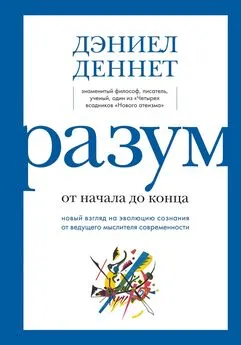

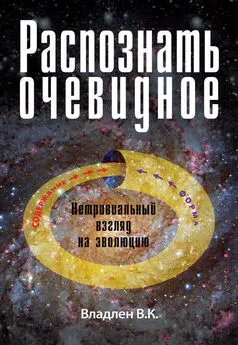
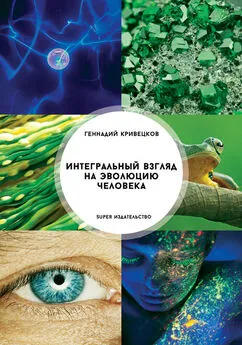

![Берндт Хайнрих - Зачем мы бежим, или Как догнать свою антилопу [Новый взгляд на эволюцию человека] [litres]](/books/1057566/berndt-hajnrih-zachem-my-bezhim-ili-kak-dognat-svo.webp)
![Джеффри Миллер - Соблазняющий разум [Как выбор сексуального партнера повлиял на эволюцию человеческой природы] [litres]](/books/1070954/dzheffri-miller-soblaznyayuchij-razum-kak-vybor-seksu.webp)

